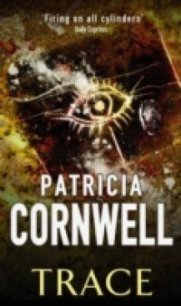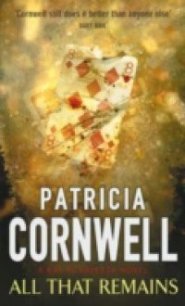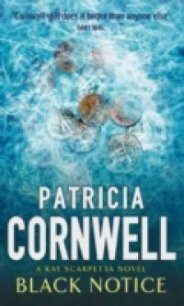The Last Precinct - Cornwell Patricia (читаем книги онлайн TXT) 📗
"Didn't ask her that," Stanfield responds. "So he's got nothing in his pockets. That's kind of unusual."
"No one checked them at the scene?"
"Well, I didn't bag the clothes, to tell you the truth. Another officer did that, but I'm sure nobody dug in the pockets, or at least no personal effects was found or I would know and have them with me," he says.
"Well, how about you call Mrs. Kiffin right now and see if she remembers him wearing this clothing when he checked in?" I politely tell Stanfield to do his job. "And what about a car? Do we know how he got to the motel?"
"No vehicle's turned up so far."
"The way he was dressed is certainly inconsistent with a low-budget motel, Detective Stanfield." I am drawing pants on a clothing diagram form.
The black jacket and black T-shirt as well as the belt, shoes and socks are expensive designer labels, and this makes me think about Jean-Baptiste Chandonne, whose unique baby-fine hair was found all over Thomas's decomposing body when it showed up in the Richmond Port earlier this month. I comment on the similarity of the clothes to Stanfield. The prevailing theory, I go on to explain to him, is that Jean-Baptiste murdered his brother, Thomas, probably in Antwerp, Belgium, and switched clothing with him before sealing the body inside a cargo container bound for Richmond.
"Because you found all those hairs I been reading about in
the paper?" Stanfield is trying to understand what would be difficult for even the most experienced investigator who has seen it all.
"That and microscopic findings that relate to diatoms_algae_consistent with an area of the Seine near the Chandonne house in lie Saint-Louis, in Paris." I talk on. Stanfield is completely lost. "Look, all I can tell you, Detective Stanfield, is this man"_I refer to Jean-Baptiste Chandonne_"has a very rare congenital disorder and allegedly has been known to bathe in the Seine, maybe thinking it might cure him. We have reason to believe the clothing on his brother's body was originally Jean-Baptiste's. Make sense?" I am drawing a belt and noting from the indentation in the leather which notch was used the most.
"Well, to tell you the truth," Stanfield replies, "I been hearing about nothing but this weird case and this Werewolf fellow. I mean, ma'am, that really is all you hear when you turn on the TV or pick up the paper, and I guess you know that, and by the way, I'm really sorry for what you been through and to tell you the truth, can't figure how you can even be in here or thinking straight. Godalmighty!" He shakes his head. "The wife said if something like that showed up at our door, he wouldn't have to do a thing to her. She'd die right off of a heart attack."
I catch a spark of his misgivings about me. He is wondering if I am completely rational right now, if I might just be projecting_if somehow everything I experience becomes tainted by Jean-Baptiste Chandonne. I slip the clothing diagram off the clipboard and place it with John Doe's paperwork as Stanfield dials a number he reads from his notepad. I watch him insert a finger in his free ear, squinting as if Turk's sawing open another skull hurts his eyes. I can't hear what Stanfield is saying. He hangs up and comes back over to me as he reads the video display of his pager.
"Well, we got good news and bad news," he announces. "The lady, Mrs. Kiffin, remembers him dressed real nice in a dark suit. That's the good news. The bad news is, she also remembers he had a key in his hand, one of those remote kinds that a lot of new, expensive cars have."
"But there's no car," I reply.
"No ma'am, no car. No key, either," he says. "Sure looks
like whatever happened to him, he had some help. You think maybe somebody drugged him and then tried to burn him up to hide the evidence?"
"I think we'd better seriously consider homicide." I state the obvious. "We need to get him printed and see if he matches up with anybody in AFIS."
The Automated Fingerprint Identification System allows us to scan fingerprints into a computer and compare them with those in a database that can be linked state to state. If this dead man has a criminal record in this country, or if his prints are in the database for some other reason, we most likely will get a hit. I work my hands into a pair of fresh gloves, doing my best to cover the plaster looped around my left lower palm and thumb. Fingerprinting dead bodies requires a simple tool called a spoon. It is nothing more than a curved metal implement shaped much like a hollow tube cut in half lengthwise. A strip of white paper is threaded through slits in the spoon so that the paper's surface is curved to accommodate the contours of fingers no longer flexible or compliant to their owner's will. With each print, the strip is advanced ahead to the next clean square. The procedure isn't hard. It doesn't require great intelligence. But when I tell Stanfield where the spoons are, he frowns as if I have just spoken to him in a foreign language. I ask him if he has ever printed a dead body before. He admits he has not.
"Hold on," I say, and I go to the phone and dial the extension for the fingerprints lab. No one answers. I try the switchboard. Everyone is gone for the day because of the weather, I am told. I get a spoon and ink pad from a drawer. Turk wipes off the dead man's hands and I ink his fingers, pressing them one at a time against the curved paper strip. "What I can do if you have no objection," I tell Stanfield, "is see if Richmond City will pop these into AFIS so we can get that going." I press a thumb inside the spoon while Stanfield watches with an unpleasant expression on his face. He is one of these people who hates the morgue and can't get out of it fast enough. "Doesn't look like there's anyone in the labs to help us right now, and the sooner we can figure out who this guy is, the bet- ter," I explain. "And I'd like to get the prints and other information to Interpol in the event this man has international connections."
"Okay," Stanfield says with another nod as he glances at his watch.
"Have you ever dealt with Interpol?" I ask him.
"Can't say I have, ma'am. They're sort of like spies, aren't they?"
I page Marino to see if he can help. He drops by forty-five minutes later, by which time Stanfield is long gone and Turk is tucking John Doe's sectioned organs inside a heavy plastic bag that she will place in the body cavity before she sews up the Y incision.
"Yo Turk," Marino hails her when he passes through opening steel doors. "Freezing leftovers again?"
She glances up at him with one raised eyebrow and a cocked smile. Marino likes Turk. He likes her so much he is rude to her at every opportunity. Turk doesn't look like what one might conjure up from her nickname. She is petite, with a clean prettiness and creamy complexion, her long blond hair tied back and clipped up high like a show horse's tail. She threads heavy white waxed twine into a twelve-gauge suture needle as Marino continues to pick on her. "I tell ya," he says, "I ever get cut, I ain't coming to you for stitches, Turk." She smiles, dipping the big, angled needle into flesh and tugging twine through.
Marino looks hung over, his eyes bloodshot and puffy. Despite his quips, he is in a foul mood. "You forget to go to bed last night?" I ask him.
"More or less. It's a long story." He tries to ignore me, watching Turk and oddly distracted and ill at ease. I untie my gown and take off my face shield, mask and O.R. cap. "See how quickly you guys can get these into the computer," I tell him, all business and not especially friendly. He is keeping secrets from me and I am pissed off by his peacock display of adolescent behavior. "We've got a bad situation here, Marino."
His attention lifts off Turk and lights on me. He gets sen- ous. He drops the childish act. "How 'bout you tell me what's going on while I smoke," he says to me, meeting my eyes for the first time in days.



